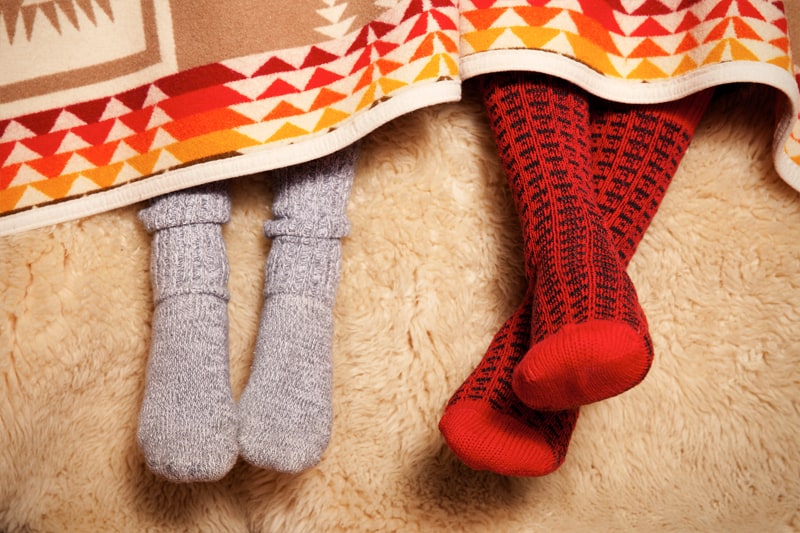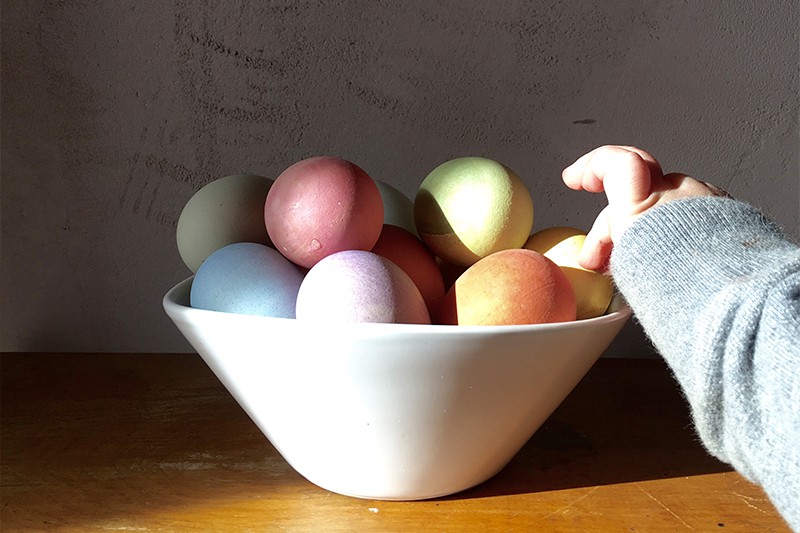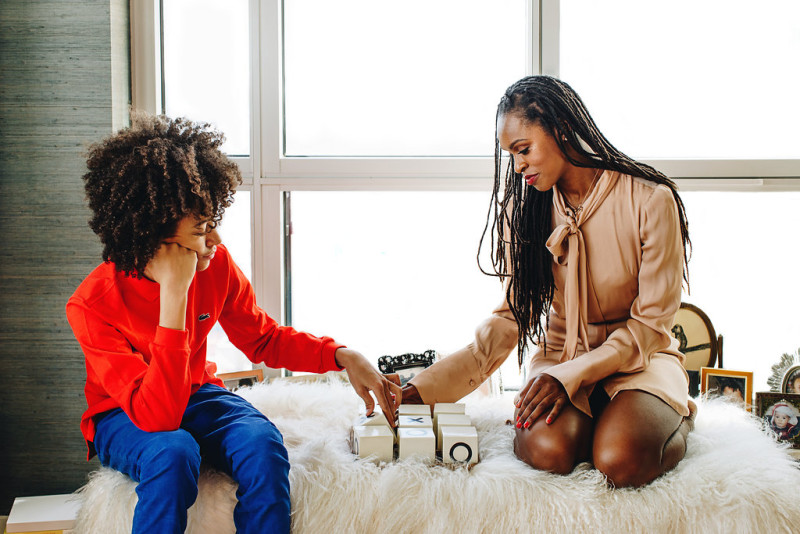
The Power Of “Hygge”—A.K.A. The Danish Concept Of Cozy Together Time
Written by Katie Hintz-Zambrano
Photography by Photographed by Shannon Sinclair
This article was originally published on December 21, 2015.
Parenting practices around the world are fascinating to us, which is why we continue to take a deep dive into the methods used in Denmark, a.k.a. the “happiest place in the world.” Here, we carry on our series with the authors of The Danish Way of Parenting, Jessica Alexander and Iben Sandahl. The two have already helped us tackle the “Danish way” principles of the power of play, the importance of teaching empathy, and no-ultimatums parenting. Below, we quizzed them on the Danish concept of “hygge,” a theory that we think all families could use in today’s hyper-“connected” digitally driven world.
What exactly is hygge?
“Hygge (pronounced hooga) is a word that dates back to the 19th century and is derived from the Germanic word hyggja, which means to think or feel satisfied. Many people think of hygge as being ‘cozy’ but that only brushes the surface of a much deeper concept. Hygge is a verb, a noun, an adjective, an identity-related symbol, a mood to be in, a feeling, and it can even have moral implications. But at the heart of it, hygge is about creating intimacy, connectedness, conviviality, and fluid togetherness with friends and family. Danes are raised on hygge, so they do it naturally without even thinking about it. It is such an integral part of their cultural fabric that most Danes don’t even realize there are unspoken rules to hygge. We believe that the Danes’ ability to hygge is one of the main reasons they are so happy. They teach their children this skill and they grow up to pass the tradition onto their familes. Hygge is creating a safe zone of togetherness, which makes it easy for all family members to take part in it at all times during any point in their lives. Through the good and the bad, the ups and the downs, hygge serves as a safe, comfortable, judgment-free zone for connection.”
How does this safe zone of togetherness work?
“Try to picture a room. Inside this room is hygge. As everyone arrives they take off their drama and leave it at the door. Their work issues, their negativity about others, judgments, complaining, bragging, highly controversial topics. All of these things get left outside so that when people enter the hygge space, no one feels like they have to put their guard up, compete, or be defensive. That would absolutely not be hyggeligt. The key is that while you all ‘hygger sig’ (cozy around together), everyone should be able to feel that they can really relax and connect. It’s a space to be free from the outside world and stressors and personal issues and just be present in the moment. There are plenty of other times in our life to stress out and focus on what we don’t like about life or others, but while you are in the hygge space, it is about ‘we’ time, not ‘me’ time. You are not there to compete but to connect. Everyone has to work together to make hygge happen, helping out so that not one person gets stuck doing all the work. Playing games is a great way to hygge, for example, because it involves everyone, it’s fun and it’s a way to avoid drama and be present. These moments make clean, warm memories that our children absorb and thrive on. They are very good for us, too. The payoff is huge.”
Explain the payoff.
“The payoff of hygge is that it can dramatically improve wellbeing. All the scientific research now shows that spending quality time with friends and family brings more happiness than almost anything else in the world, including money. And yet, many of our get-togethers are marred with negativity, complaining, drama, and disappointment. Hygge is a way to make those designated times safe zones; cozy and drama-free places where you can get that much needed connection to the ones you love. And it works by focussing on the group and the moment and acting as a team.”
How can American families incorporate hygge into their lives?
“Hygge is something that needs to be talked about and created together, so we created a ‘hygge oath‘ that you can find on our site to help people understand it. It is something that familes can look at together and print out if they want and talk about. That way everyone knows what it is and how it works. For periods of time anyone can make hygge happen. We know the hygge oath works because families have already tried it with success. Our hope is that the more hygge spreads, the easier it will be to cultivate some of that cozy connectedness outside of Denmark. Maybe one day, it could even become a regular term we use here in the U.S. The main thing to remember is that ‘hygge’ is for a limited time. If it’s tough and you feel like screaming at your mother-in-law or you are getting tired of thinking about ‘we’ instead of ‘me,’ just remember it’s only for another hour or two. Stress, negativity, and ‘my issues’ are all just outside of hygge’s door. The longterm benefits of creating warm, cozy, drama-free memories for your children are immeasurable. And it feels good for us, too. While it may take a little effort for us to implement hygge, it will come naturally for our children when they grow up. And we think these safe, cozy zones of togetherness are a worthwhile legacy of wellbeing worth leaving.” (Read these 5 easy-to-follow steps for a more hygge family life).
For more Danish parenting advice, scoop up The Danish Way Of Parenting: A Guide To Raising The Happiest Kids in the World. For any of you taking the hygge oath, feel free to share your experience on Facebook for a chance to be featured on The Danish Way and enter to win a signed book. You can also visit Alexander’s website and Facebook page.
Share this story




